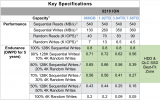Hi,
We have a PBS installed over a virtual machine that access data stores located in an NFS server over the Proxmox in which the PBS virtual machine is running.
We have several data stores in this PBS used for backups from different Proxmox systems.
The virtual machines backups from the Proxmox systems are going fine but the garbage collector process for free space is running extremely slow. Now, we have a garbage collector running in one of the data stores for more than 7 days and it has not finished yet:
Due to this, we will get our datastore fulls in some days, because we are not able to remove the pruned data.
Why is happening this?
What can we do for speed up the garbage collection process?
Thank you very much for your help.
We have a PBS installed over a virtual machine that access data stores located in an NFS server over the Proxmox in which the PBS virtual machine is running.
We have several data stores in this PBS used for backups from different Proxmox systems.
The virtual machines backups from the Proxmox systems are going fine but the garbage collector process for free space is running extremely slow. Now, we have a garbage collector running in one of the data stores for more than 7 days and it has not finished yet:
Bash:
2021-03-27T18:49:53+01:00: marked 52% (604 of 1160 index files)
2021-03-27T20:00:50+01:00: marked 53% (615 of 1160 index files)
2021-03-27T23:19:43+01:00: marked 54% (627 of 1160 index files)
2021-03-28T09:55:15+02:00: marked 55% (638 of 1160 index files)
2021-03-28T10:51:10+02:00: marked 56% (650 of 1160 index files)
2021-03-28T11:34:35+02:00: marked 57% (662 of 1160 index files)
2021-03-28T19:10:24+02:00: marked 58% (673 of 1160 index files)
2021-03-29T09:12:09+02:00: marked 59% (685 of 1160 index files)
2021-03-29T15:33:53+02:00: marked 60% (696 of 1160 index files)
2021-03-29T17:13:12+02:00: marked 61% (708 of 1160 index files)
2021-03-29T17:55:15+02:00: marked 62% (720 of 1160 index files)
2021-03-29T18:24:31+02:00: marked 63% (731 of 1160 index files)
2021-03-29T19:01:35+02:00: marked 64% (743 of 1160 index files)
2021-03-29T19:39:07+02:00: marked 65% (754 of 1160 index files)Due to this, we will get our datastore fulls in some days, because we are not able to remove the pruned data.
Why is happening this?
What can we do for speed up the garbage collection process?
Thank you very much for your help.
Last edited:


